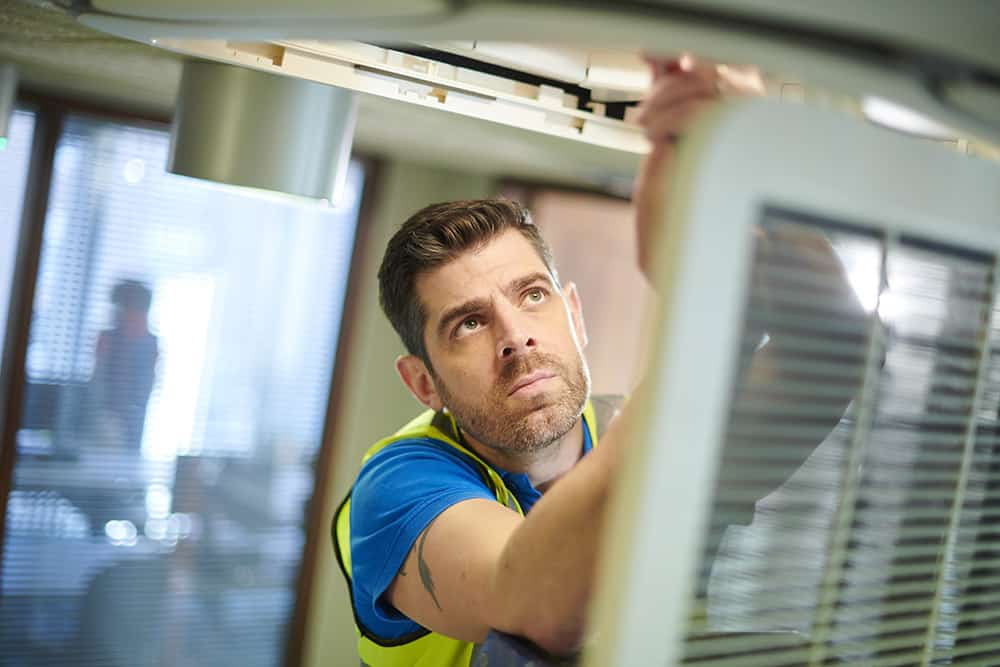For many field service businesses, that means shifting the entire operation to a remote working one, as more people begin to work from home. For some, this change was very worrisome, as the thought of moving their entire operation off-site was stressful. While others have embraced this new reality and are now considering a longer-term remote solution, even after the virus is no longer a health risk.
It has also opened up more eyes to mobile technology to remove much of the day-to-day physical contact between people. Change really hasn’t been an option for field service, but rather, an essential strategy to keep it as close to business as usual, so customers can still receive service, and businesses can still operate. Here is how some of the services and products have changed.
How to manager service safely
The question asked by everyone is simply, how do we do anything for that matter, safely. And in the field service industry, that question is the top question that every customer, technician and leader has had to ask. Some service work has to go on and can’t simply be put off until the health risk is lower. So that means on-site service calls by technicians.
For starters, it all begins with communication between the customer and the business and coming up with a plan together. It these times, it’s better to over-communicate what your response is going to be than to leave anything up to chance. Your technicians will be on-site and may have interactions without people. So, how can those risks be mitigated as much as possible?
Some solutions have been to:
- Give technicians access to areas without the need for someone else to be there to let them in.
- Working later at night or on weekends to minimize how many people could be around.
- Using remote tools to fix problems remotely.
- Keeping interactions between customers and technicians to phone conversations.
As the situation continues to evolve, the lines of communication between everyone needs to evolve as well. A plan in place will ensure not just the safety of those directly involved in any service repair, but those who will have contact with those involved later on.
Following safety guidelines
Social distancing has shown to be the best solution to battle COVID-19, with the six feet apart rule being firmly suggested. While field service work can be a lot of interaction, there are still ways to observe this suggestion and keep everyone safe. Sending only one technician to a job site will ensure social distancing isn’t an issue. And keeping customers out of the areas a technician has to work will allow them to focus on finishing the job as quickly as possible.
Technicians should be using gloves for their own protection when possible, limiting the surfaces they touch and being very mindful of where they lay down their tools, so they aren’t doing so on surfaces that have a lot of traffic, such as countertops. And after every job, use hand sanitizer or wash your hands thoroughly, as well as sanitize the tools you have used.
Safety is of the utmost importance and everyone, from the customer to the technician, has to do their part to ensure everyone is being kept safe.
Using mobile and digital technology
In this situation, more field service businesses are starting to turn to mobile and digital technology to keep their workers safe and to minimize the time technicians are spending completing repairs. It’s at these times when insisting customers accept digital work orders and electronic reports shouldn’t be difficult. It reduces not just the risk of the technician and customer exchanging paperwork, but also having that paperwork return to the office as well for processing.
Mobile field service apps that are connected to field service software can accomplish this easily. But even using e-mail systems to deliver reports, and text messaging for communications is now a perfectly acceptable way to conduct business. Mobile field service apps also have the ability to increase the speed in which technicians are getting from job to job, completing the work and getting off the job site as fast as possible.
When a technician is dispatched, the idea is to get them in and out quickly. You don’t want to have them going to the wrong job site or spending any more time than they have to. That means fumbling with work orders and checklists and having to fill out reports. With access to all the service history and current job tasks, a technician can get it, do the work, get out and produce digital documentation for the work completed. That eliminates the need for someone to check the work, as photos can be attached, and for transferring of physical documents.
Business ‘as much’ as usual
The COVID-19 virus has definitely had a long-lasting effect on all of us. And every day things are changing. At this time, it’s important to just keep communication lines open with your customers and work together to come up with the best and safest solution possible. While this could be a new way of interacting for some field service businesses, technicians and customers, the reality is that it’s for everyone’s safety and well-being. And it looks as if it could be the new normal for the time being.

